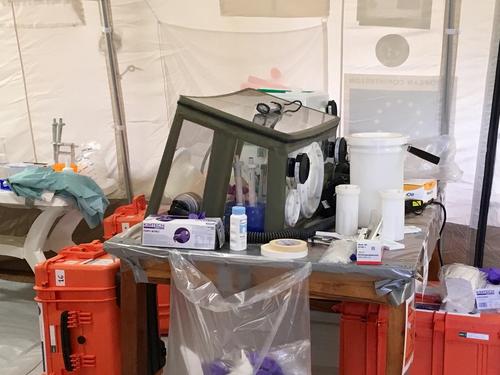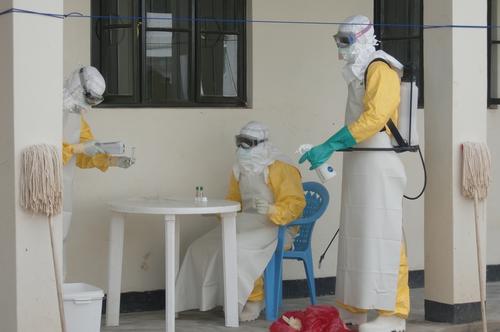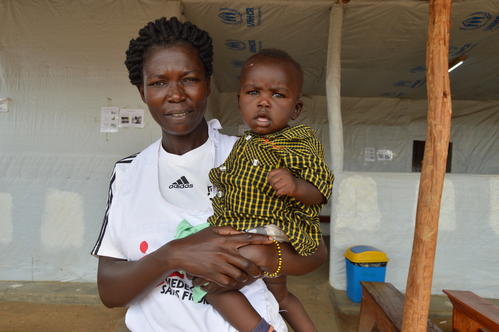Ugandan authorities have declared the end of the Marburg fever outbreak that has affected the eastern part of the country since October. MSF provided support to local authorities, in particular in case management capacity and epidemic surveillance. MSF, the Ugandan Ministry of Health and their partners have also introduced new tools which will improve case management in future haemorrhagic fever outbreaks.
On Friday 8 December Uganda declared the end of the Marburg fever outbreak, 42 days after the death of the last confirmed case.
In total, there were three deaths declared connected to the outbreak (one suspected case on 25 September and two confirmed cases on 13 October and 26 October), in Kween and Kapchorwa districts, in the east of the country.
Médecins Sans Frontières (MSF) intervened in the area at the end of October, in close collaboration with the Ministry of Health, and was in charge of leading the response for the case management.
MSF teams set up two treatment centres, with a capacity of 10 beds each, in Kapchorwa district hospital and near the Kaproron Health Centre, to ensure adequate capacity and preparedness to manage a large-scale epidemic. These two centres will now be decommissioned.
Healthcare staff in the district were trained at these centres by MSF staff experienced in haemorrhagic fevers outbreaks. The main fields of training included the safe management of suspect and confirmed cases, collection of laboratory samples and community surveillance. MSF also assisted the Ministry of Health and the World Health Organization with epidemiological surveillance, community health promotion and mapping activities during the epidemic. An MSF ambulance with isolation capacities was also deployed to the field.
“This is the first time that Marburg fever has been diagnosed in these districts of Uganda, but strong national surveillance meant that the epidemic was noticed and confirmed early enough to allow for a rapid and effective collaborative response,” said Dr Natalie Roberts, head of MSF’s emergency operations. “Health promotion activities within the communities of the districts were also crucial to increase their understanding of this disease and raise acceptance for our intervention.”
Viral haemorrhagic fevers, including Marburg and Ebola, are endemic in Uganda. The risk of outbreaks in the future is high, and it is therefore crucial that surveillance mechanisms and emergency preparedness are maintained.
During this outbreak, MSF, the Ministry of Health and other partners also introduced and ran full-scale tests of new tools, which might improve the response to new outbreaks in the future.
This included a mobile laboratory, built to allow for testing of high-risk samples, provided by the European Union. The deployment of such testing devices can significantly reduce turn-around time to receive confirmation of suspected cases via blood testing – the national laboratory is in Kampala, a 10-hour drive away.

MSF also supported the use of antiviral drugs in the treatment and prophylaxis of Marburg, with the objective of reducing the mortality of the disease. The limited scope of the outbreak fortunately didn’t require the use of these antivirals, but regulatory and clinical discussions held with Ugandan Ministry of Health and other partners over their use should be useful to improve access to these medications in future outbreaks.
“We are very keen to continue to collaborate closely with Ugandan Ministry of Health, the World Health Organization and other partners in Kampala, in order to improve our response to similar epidemics time after time,” added Dr Roberts. “This includes provision of quality patient care for confirmed and suspect cases, and support to health promotion within Ugandan communities to help with their understanding of this disease.”
MSF was also active on the other side of the border in Kenya, conducting contact tracing, training health staff, and setting up a small treatment centre, which fortunately wasn’t used as no cases were declared in the country.
MSF first intervened in Uganda in 1980. The medical humanitarian organisation currently runs emergency programmes to assist South Sudanese refugees in the north of the country, as well as longer-term programmes in Arua and Kasese districts. Here, focus is put on HIV, tuberculosis, malaria and other infectious diseases, as well as access to healthcare for populations with specific needs (adolescents, fishermen communities, sex workers, and others).






